Growing a SaaS business isn’t just about having a great product—it’s about making sure the right people find it. That’s where inbound marketing comes in. Instead of relying on aggressive ads, inbound marketing helps SaaS companies attract potential customers through valuable content, SEO, and lead nurturing.
In this article, we’ll explore the best SaaS inbound marketing agencies that specialize in helping software businesses increase organic traffic, generate leads, and convert visitors into paying customers. Whether you need SEO, content marketing, or paid media, these agencies can help drive long-term growth.
Inbound marketing is key to SaaS growth, but in 2025, it’s not just about SEO and content, it’s about optimizing for AI-driven search. Answer Engine Optimization (AEO) ensures your SaaS business gets discovered not just on Google but also in AI-powered tools like ChatGPT, Gemini, and Google’s AI Overviews. Watch the video below to see how AEO is reshaping inbound marketing and how you can leverage it for long-term success.
Get a Free Digital Marketing Strategy Consultation
1. Nuoptima

At Nuoptima, we specialize in digital marketing, offering SEO and paid advertising solutions to help SaaS companies grow their online presence. Our expertise lies in increasing organic traffic, improving search engine rankings, and optimizing conversions. Through content development, link building, and data-driven marketing strategies, we attract and retain customers using inbound marketing.
We also provide paid advertising services through Google Ads and Facebook Ads, ensuring SaaS businesses effectively reach their target audience. Our approach includes technical SEO improvements, website optimization, and performance tracking to maximize marketing efforts. By implementing these strategies, we help SaaS companies enhance visibility, strengthen brand authority, and drive sustainable growth.
Services
- SEO strategy and execution for SaaS companies
- Keyword research and content optimization
- Link building to boost search rankings
- Google Ads and Facebook Ads management
- Website performance tracking and technical SEO
Key Highlights
- SEO strategies designed to increase organic traffic and lead generation
- Paid advertising campaigns targeting specific SaaS audiences
- Data-driven inbound marketing for improved conversion rates
- Performance tracking and reporting for ongoing optimization
Key Achievements
- Helped SaaS businesses grow their organic traffic and search rankings
- Managed paid media campaigns with measurable ROI
- Worked with companies across various SaaS verticals to improve inbound marketing outcomes
Contacts
- Website: nuoptima.com
- Email: [email protected]
- LinkedIn: www.linkedin.com/company/nuoptima
- YouTube: www.youtube.com/@nuoptima
Request a Personalized Company Match
2. Single Grain
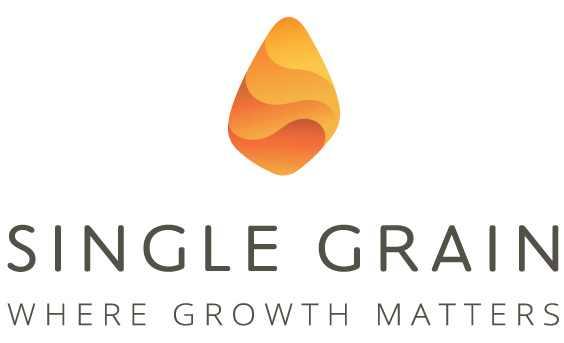
Single Grain is a full-service digital marketing agency that focuses on helping businesses enhance their online presence and revenue generation. Since its establishment, the company has expanded its services to cater to a wide array of industries, including e-commerce, SaaS, and B2B enterprises. Single Grain specializes in creating customized strategies tailored to meet each client’s unique business objectives.
The agency employs a combination of traditional and innovative marketing tactics, leveraging data analysis and AI-driven tools to optimize campaigns. Single Grain offers services ranging from paid advertising and SEO to content marketing and conversion rate optimization. With a remote-first approach, the company works with clients globally, emphasizing data transparency and measurable outcomes.
Services
- SEO & Content Marketing: Content creation, technical SEO, and inbound marketing.
- Paid Advertising: Management of Google Ads, Facebook Ads, LinkedIn Ads, and other paid media platforms.
- Conversion Rate Optimization (CRO): Strategies to enhance user experience and maximize conversions.
- SaaS Marketing: Solutions for nurturing and converting qualified leads in the SaaS sector.
- E-commerce Marketing: Campaigns designed for online retail growth.
- Strategic Marketing Consultation: Custom consulting services for building marketing funnels and improving ROI.
Key Highlights
- Serves a variety of industries, including B2B, SaaS, and e-commerce.
- Offers AI-driven content marketing and programmatic SEO.
- Remote-first strategy, enabling global collaboration with clients.
Key Achievements
- Delivered a 325% increase in click-through rates for specific campaigns.
- Boosted organic traffic by 268% through AI-driven SEO strategies.
- Achieved a 600% increase in organic lead flow for a client using AI-generated content.
Contacts
- Website: singlegrain.com
- Email: [email protected]
- Facebook: facebook.com/singlegrain
- Twitter: twitter.com/singlegrain
- Linkedin: linkedin.com/company/single-grain-llc
Schedule a Free Consultation Call
3. NinjaPromo

NinjaPromo is a subscription-based digital marketing agency serving industries like fintech, SaaS, crypto, and eCommerce. The agency provides full-scale marketing support, including social media management, influencer marketing, and paid media campaigns.
Operating globally with offices in London, Dubai, and New York, NinjaPromo focuses on data-driven strategies to boost engagement, visibility, and conversions for clients. Their tailored services streamline growth for businesses across diverse sectors.
Services:
- Social Media Management
- Paid Media and Paid Social Campaigns
- SEO and Influencer Marketing
- Community Management
- Branding and Video Production
- Website and Mobile App Development
Key Highlights
- Subscription-based model with 100+ services
- Offices in multiple global locations
- Specialized experience in crypto, gaming, and fintech
Key Achievements
- Managed paid social campaigns generating millions in client revenue
- Increased community engagement and subscriber growth for various businesses
- Developed marketing strategies across different industries with measurable results
Contact and Social Media Information:
- Website: ninjapromo.io
- Email: [email protected]
- Phone: +1 929-492-4413
- Address: 276 5th Avenue, NY 10001, New York, United States of America
- Linkedin: www.linkedin.com/company/ninjapromo
- Twitter: twitter.com/ninjapromoio
- Instagram: www.instagram.com/ninja.promo
- Facebook: www.facebook.com/ninjapromoofficial
4. NoGood
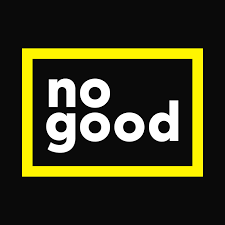
NoGood is a performance-driven marketing agency serving industries like SaaS, fintech, and healthcare. They use AI-powered analytics to create campaigns focused on growth and optimization across platforms like TikTok, Facebook, and LinkedIn.
With an 84% client retention rate, NoGood delivers scalable solutions that emphasize measurable results and data-driven strategies.
Services:
- Content Creation
- Campaign Strategy and Execution
- Influencer Collaborations
- Social Media Analytics and Reporting
Key Highlights
- Specializes in growth-focused campaigns
- Focuses on SaaS, fintech, and healthcare industries
- Uses AI-driven analytics to optimize performance
Key Achievements
- Achieved significant revenue growth for SaaS and fintech clients through data-driven marketing strategies
- Increased customer acquisition and retention rates for healthcare brands with personalized digital campaigns
- Developed high-performing social media strategies that improved engagement and conversion rates across multiple platforms
Contact and Social Media Information:
- Website: www.nogood.io
- LinkedIn: www.linkedin.com/company/nogood
- Facebook: www.facebook.com/nogood.io
- Instagram: www.instagram.com/nogood.io
5. Directive Consulting

Directive Consulting is a marketing agency specializing in strategies for B2B SaaS companies. With a focus on customer generation, they aim to deliver measurable revenue growth by aligning marketing strategies with financial modeling and first-party data insights. Their approach emphasizes creating demand through innovative campaigns while ensuring alignment between marketing and sales teams to maximize customer lifetime value.
Founded with a commitment to redefine B2B marketing, Directive Consulting has worked with numerous SaaS companies at various stages of growth, from Series A to IPO. Their methodology integrates brand creation, performance marketing, and strategic customer engagement to optimize client marketing engines for scalable and sustainable growth.
Services
- Paid Media
- Content and SEO
- Marketing Operations
- CRO (Conversion Rate Optimization) and Performance Design
- Go-to-market Strategy
Key Highlights
- Worked with over 420 brands in the technology sector
- Generated over $1 billion in revenue for clients
- Developed the Customer Generation methodology for B2B marketing
- Operates globally with offices in North America, the UK, and Mexico
Key Achievements
- Designed marketing strategies for globally recognized brands, including Amazon, Adobe, and ZoomInfo
- Invests $2.2 million annually in research and development to test marketing tactics
- Delivered measurable growth outcomes tied to metrics like customer lifetime value
Contacts
- Website: directiveconsulting.com
- Phone: (949) 214-4024
- Email: [email protected]
- Facebook: facebook.com/directiveconsulting
- Instagram: instagram.com/directiveconsulting
- Twitter: twitter.com/directiveagency
- Linkedin: linkedin.com/company/directive-consulting
6. Content Allies

Content Allies, established in 2018, is a B2B podcast production agency headquartered in Colorado Springs, Colorado. The company specializes in launching, producing, and promoting podcasts and content series for B2B enterprises, focusing on strategies that impact clients’ revenue generation. Their services encompass strategy alignment, live recording engineering, and promotion tactics such as social media repurposing and podcast SEO. Operating on a white-glove, full-service model, Content Allies manages all aspects of podcast production, allowing clients to concentrate on conducting interviews and building relationships with guests.
The agency has collaborated with leading companies, including Meta, Siemens Energy, and Alibaba.com, producing hundreds of podcast episodes in production at any given time. Their team comprises producers, associate producers, writers, video and audio editors, project managers, graphic designers, guest procurement specialists, strategists, and quality assurance experts. Content Allies emphasizes the importance of aligning podcast strategies with business objectives, ensuring that each production contributes to the client’s bottom line.
Services:
- Content Creation
- Strategic Planning
- Content Distribution
- Lead Generation
- SEO Optimization
Key Highlights:
- Experienced in SaaS content marketing with a focus on lead generation.
- Strategic approach to content distribution for maximum reach.
- Skilled in crafting SEO-friendly content for target audiences.
Key Achievements:
- Successful implementation of content strategies that drive client growth.
- Strong reputation for delivering valuable leads through content marketing.
Contacts:
- Website: contentallies.com
- Address: 1624 Market St, Ste 226 PMB 37991, Denver, Colorado 80202
- Email: [email protected]
- LinkedIn: www.linkedin.com/company/contentallies
- Twitter: x.com/content_allies
7. Marketing Maven

Marketing Maven, founded in 2009, is a full-service marketing and communications agency headquartered in Camarillo, California, with additional offices in New York. The agency offers a comprehensive suite of services, including market research, digital advertising, PR, email marketing, event marketing, creative services, influencer marketing, social media marketing, and web development and management. Their team comprises integrated marketing specialists who create customized campaigns tailored to the diverse needs of their clients. Marketing Maven has been recognized as one of the Most Entrepreneurial Companies in America and one of the Fastest Growing Companies in America.
The agency’s leadership includes CEO and President Lindsey Carnett, who founded Marketing Maven after leading integrated communications campaigns for firms and private industries worldwide. The team also features Vice President of Media Relations Frank Tortorici, CTO John Carnett, Director of Integrated Marketing Andreya Peru, and other specialists in various marketing disciplines. Marketing Maven has collaborated with a diverse range of clients, including brands such as X-Chair, Yakult, WPO, Vistage, Verses, Nectar, Huma.ai, Lido, SBA, Servicon, and Taft. The agency’s mission is to exceed expectations and help clients achieve their marketing and communications objectives through a high level of professionalism and expertise.
Services:
- Content Marketing Strategy
- Social Media Management
- Brand Development
- SEO Optimization
Key Highlights:
- Expert in connecting brands with audiences through strategic content.
- Proven success in brand-building and engagement in SaaS.
Key Achievements:
- High client retention due to content-focused marketing strategies.
- Recognized for boosting brand presence in competitive markets.
Contacts:
- Website: marketingmaven.com
- Phone: 310.994.7380
- E-mail: [email protected]
- Linkedin: www.linkedin.com/company/marketing-maven-public-relations
- Facebook: www.facebook.com/MarketingMavenPublicRelations
- Instagram: www.instagram.com/marketingmavenpr
- Twitter: x.com/marketingmaven2
8. Search Nurture

Search Nurture, established in 2017, is a digital marketing agency headquartered in San Francisco, California. The agency specializes in services such as search engine optimization, paid media campaigns, and retail advertising, primarily catering to the eCommerce and B2B SaaS sectors. Their team comprises over 17 marketing professionals who collaborate with clients to develop tailored strategies aimed at enhancing online visibility and driving sales. Search Nurture operates on a client-specific, hand-tailored approach, distinguishing itself from agencies that employ a one-size-fits-all methodology.
In addition to their core services, Search Nurture emphasizes a culture of inclusion and collaboration. Their leadership team includes CEO Spencer Padway, Head of Operations Lindsey McAndrews, Sr. Director of People Savannah Alexander, and Director of Sales Eli Weidinger. The agency’s origins as a marketing training academy have influenced its current operations, with a continued focus on education, growth, and empowerment for both clients and employees. Search Nurture’s client portfolio includes brands such as John Frieda and eCreamery, reflecting their capacity to manage diverse and geographically varied projects.
Services:
- SEO & Content Marketing
- Paid Media
- Retail Ads
- Content Strategy and Creation
Key Highlights:
- Expertise in content for the eCommerce and SaaS sectors.
- Analytical approach ensures results-driven content strategies.
Key Achievements:
- Helped clients boost brand visibility with targeted content.
Contacts:
- Website: www.searchnurture.com
- Email: [email protected]
- Phone: (510) 679-3507
- LinkedIn: www.linkedin.com/company/searchnurture
- Instagram: www.instagram.com/search_nurture
9. SimpleTiger

SimpleTiger is a marketing agency founded in 2007 with a specific focus on search engine optimization and digital marketing for software as a service companies. Their strategic emphasis is on creating lean, efficient marketing campaigns that generate results without the complexity often found in traditional marketing approaches. One distinctive aspect of SimpleTiger’s approach is their streamlined, transparent pricing model, which is designed to give clients clarity on costs and expected outcomes from the outset. This model is part of their philosophy of maintaining simplicity and transparency throughout the client relationship, avoiding unnecessary complications or hidden fees.
They provide in-depth reporting and analytics for each campaign, enabling clients to see clear, quantifiable progress in line with their business goals. SimpleTiger operates as a fully remote agency, allowing them to attract a diverse team of digital marketing professionals from various locations, which enriches their perspective and enhances their service offering. The agency’s long-standing relationships with clients like Bitly and Jotform are a testament to their consistency and reliability. SimpleTiger’s commitment to specialization in software as a service allows them to stay up-to-date with industry trends, tailoring their strategies to the evolving needs of technology companies.
Services:
- Social media content strategy and advertising
- SEO and content creation for SaaS
- Community engagement and management
- Influencer partnerships and analytics
Key Highlights:
- Focuses on efficient, effective social media strategies for rapid brand growth.
- Uses SaaS-specific trends and tactics to drive social media presence.
- Strong reputation for enhancing online visibility and engagement for SaaS brands.
Key Achievements:
- Trusted by major SaaS companies like Bitly and Jotform.
- Successfully scaled SaaS brands through innovative social strategies.
Contacts:
- Website: www.simpletiger.com
- Phone: +1 (941) 893-4118
- Address: 677 N Washington Blvd Sarasota, FL 34236
- LinkedIn: www.linkedin.com/company/simpletiger-llc
- Twitter: twitter.com/simpletiger
- Facebook: www.facebook.com/simpletigerllc
10. Inter-Dev
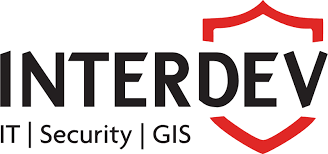
Inter-Dev, established in 2007, is a digital marketing agency headquartered in Israel. The agency specializes in serving technology companies and startups, offering services such as digital campaigns, search engine optimization, content marketing, and HubSpot marketing automation. Their client portfolio includes companies in sectors like cybersecurity, SaaS, industrial manufacturing, broadband, medical, and communications. Inter-Dev’s team comprises professionals experienced in managing digital marketing strategies tailored to the unique needs of B2B enterprises.
The agency’s service offerings encompass paid search engine marketing, paid social media advertising, inbound content marketing, social media management, video production marketing, and podcast production services. They also provide digital analytics services, including tag management, heat-mapping, conversion tracking, funnel creation, and user engagement analysis. Inter-Dev has collaborated with clients such as Rad, Hailo, Phase One, LiveU, Itamar Medical, D-ID, MeMed, Autotalks, and Elron Ventures. Their approach focuses on planning and executing integrated digital marketing activities aimed at scaling online presence and engaging targeted audiences.
Services:
- Performance Content Marketing
- SEO and Digital Analytics
- Content Creation and Distribution
- Marketing Automation
Key Highlights:
- Extensive experience across various B2B industries.
- Focus on SEO-driven growth and content marketing for tech firms.
Key Achievements:
- Known for implementing impactful content strategies.
Contacts:
- Website: inter-dev.co.il
- Email: [email protected]
- Phone: +972-3-7173777
- Address: Rokach 101 Blvd, Tel-Aviv, Israel
- LinkedIn: www.linkedin.com/company/inter-dev
- Facebook: www.facebook.com/idmarketing
11. Bay Leaf Digital
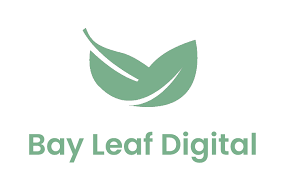
Bay Leaf Digital is a Texas-based SaaS marketing agency specializing in content marketing, SEO, PPC, and other digital services to support SaaS businesses across North America. Established in 2013, the agency works with clients ranging from early-stage startups to large enterprises, focusing on demand generation, lead nurturing, and marketing automation. Bay Leaf Digital assigns each client a dedicated team, typically comprising a Senior Marketing Strategist and Account Manager, supported by experts in specific digital channels.
A notable aspect of Bay Leaf Digital’s operation is its specialization in integrating and optimizing client technology stacks, including popular platforms for marketing and customer relationship management. Their approach combines traditional digital marketing with emerging technologies like AI, making them adaptable to changes in the SaaS landscape. The agency also emphasizes transparency in reporting, providing clients with insights into metrics like MQLs and growth rates on specific channels such as LinkedIn. Through a full-funnel marketing approach, Bay Leaf Digital supports its clients’ growth and development, leveraging a decade of industry experience to design and implement high-impact strategies.
Services:
- SaaS Content Marketing
- Analytics & PPC
- SEO & Retargeting
- Content Strategy
Key Highlights:
- Specializes in B2B SaaS content strategies.
- Known for qualified lead generation.
Key Achievements:
- Improved client conversion rates through data-driven content.
- Consistent boosts in digital visibility and client engagement.
Contacts:
- Website: www.bayleafdigital.com
- Phone: 866 200 9814
- Address: 2140 Hall Johnson Rd STE 102-180 Grapevine, TX 76051
- LinkedIn: www.linkedin.com/company/bay-leaf-digital
- Twitter: twitter.com/BayLeafDigital
- Facebook: www.facebook.com/bayleafdigital
12. Brafton

Brafton, a SaaS content marketing agency, delivers a range of digital content services focused on driving growth for SMBs and enterprise-level clients. Their core offerings include SEO-focused copywriting, graphic design, video production, and animation services. Using a data-driven approach to SEO, they target keywords aligned with audience intent, optimizing landing pages, blog posts, and website copy to improve clients’ search visibility. Their design team specializes in infographics, display ads, and other visual assets for use in multi-channel campaigns. In addition, Brafton offers custom web design services aimed at improving user engagement and brand credibility.
Brafton’s marketing services extend beyond content creation to include social media management, email marketing, and CRO. Social media strategies are tailored to major platforms, designed to drive brand visibility and user engagement for clients. Project management at Brafton is facilitated through proprietary platforms, providing clients structured collaboration and efficient delivery of marketing solutions. Operating from offices in Boston, Chicago, and Sydney, Brafton serves a diverse client base across the U.S., Australia, and Europe, allowing them to adapt to international market demands with region-specific strategies.
Services:
- Content Marketing Strategy
- SEO & Content Creation
- Social Media Content
- Video Production
Key Highlights:
- Known for creating high-quality, data-driven content.
- Strategic approach to content that delivers measurable results.
Key Achievements:
- Successfully increased client ROI through comprehensive strategies.
- Enhanced SEO rankings and content engagement for diverse industries.
Contacts:
- Website: www.brafton.com
- Email: [email protected]
- Phone: 617-206-3040
- LinkedIn: www.linkedin.com/company/brafton
- Facebook: www.facebook.com/Brafton
- Twitter: twitter.com/Brafton
- Instagram: www.instagram.com/brafton
13. Codeless

Codeless is a content production agency that specializes in developing high-quality, search-engine-optimized content for businesses. Their comprehensive services include strategy development, subject-specific writing, design, and video production, all aimed at supporting client growth through impactful content. By focusing on creating content that aligns with search engine algorithms, Codeless helps clients increase visibility and organic traffic, specifically tailored to meet unique business objectives. The agency offers a range of services beyond content creation, including content strategy development and content promotion.
They excel in repurposing existing content to capture new opportunities on search engine results pages and have a dedicated service for creating business-to-business video shorts. This includes transforming case studies or customer interviews into concise, engaging videos that further enhance a brand’s digital footprint. Codeless has a successful track record in achieving significant results for clients. They have helped major companies scale their content efforts, leading to marked increases in organic traffic and improved keyword visibility. Through a strategic combination of expertise and quality content, Codeless delivers long-term value and return on investment for clients across a diverse range of industries.
Services:
- SEO-focused content marketing for SaaS
- Content strategy development and execution
- Keyword research and on-page SEO
- Content promotion and distribution
Key Highlights:
- Renowned for high-quality, SaaS-optimized content creation.
- Combines SEO best practices with targeted content strategies.
- Data-backed approach to enhance brand reach and engagement.
Key Achievements:
- Elevated SaaS brands through strategic content marketing.
- Demonstrated success in improving organic reach and engagement rates.
Contacts:
- Website: codeless.io
- Linkedin: www.linkedin.com/company/codeless-io
14. Sociallyin
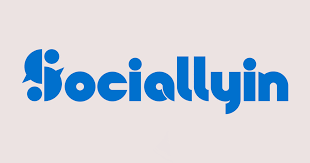
Sociallyin is a specialized social media marketing agency offering a full suite of services designed to optimize brands’ engagement across major social platforms. Their services range from social media strategy and content production to community management, paid advertising, influencer partnerships, and social selling. Sociallyin operates dedicated social studios for creating custom multimedia content, including videos, photography, and written posts, all crafted to align with a brand’s unique voice and objectives.
With over ten years of industry experience, Sociallyin has worked with globally recognized brands, implementing data-driven campaigns that aim to captivate target audiences and increase lead generation. The team consists of social media experts with deep knowledge of digital trends, allowing them to stay ahead of the curve and implement innovative strategies that adapt to the ever-evolving social media landscape. Their approach focuses on creating authentic, relatable content that resonates with specific audiences, enhancing both reach and engagement.
Services:
- Social media strategy and management
- Creative content production for social platforms
- Community engagement and influencer partnerships
- Social commerce and paid social campaigns
Key Highlights:
- Offers a comprehensive approach to social media with an emphasis on creative solutions.
- Dedicated in-house content team for consistent brand messaging.
- Over a decade of experience scaling social media for brands across industries.
Key Achievements:
- Known for crafting high-impact social campaigns.
- Consistently increased engagement and brand visibility for clients.
Contacts:
- Website: sociallyin.com
- Phone: (404) 585-4659
- Email: [email protected]
- Address: 3423 Piedmont Rd NE, Atlanta, GA 30305
- LinkedIn: www.linkedin.com/company/sociallyin
- Instagram: www.instagram.com/sociallyin
- Facebook: www.facebook.com/Sociallyin
- Twitter: twitter.com/sociallyin
15. Titan Growth

Titan Growth is a digital marketing agency specializing in search engine optimization, pay-per-click management, and social media marketing, using a unique approach powered by its proprietary technology, TitanBOT. Founded in 2004 by Danny Shepherd, the agency developed TitanBOT to replicate search engine behavior, allowing the team to enhance website performance by aligning closely with how search engines evaluate and rank websites. This technology provides clients with a strategic edge, as it enables the agency to anticipate and adapt to changes in search algorithms effectively.
The agency’s team holds triple certifications from Google, making them highly qualified to manage and optimize campaigns across a range of platforms. Their services are tailored to maximize reach and engagement, combining search engine optimization, paid advertising, and targeted social media strategies to drive measurable results. Titan Growth has been awarded Google All-Star and Premier Partner status, which gives them early access to new tools and insights, ensuring that their strategies incorporate the latest industry innovations and best practices. Titan Growth’s reputation for excellence is reflected in its consistent appearance on the Inc. 5000 list of fastest-growing private companies over several years.
Services:
- Predictive social media strategy using TitanBOT®
- Digital marketing consulting and analytics
- SEO and content marketing for SaaS brands
- Paid social media campaigns and engagement analysis
Key Highlights:
- Exclusive Google All-Star and Premier Partner status.
- Proprietary TitanBOT® technology for predictive social media planning.
- Full-service digital marketing with a focus on analytics and strategy.
Key Achievements:
- Known for increasing social media engagement using predictive technology.
- Recognized for driving sustained visibility and engagement across platforms.
Contacts:
- Website: www.titangrowth.com
- Address: 10907 Technology Place, San Diego, CA 92127
- Phone: +1 858-432-7206
- Facebook: www.facebook.com/interodigital
- Twitter: twitter.com/interodigital
- Instagram: www.instagram.com/intero_digital
- Linkedin: www.linkedin.com/company/interodigital
16. The Shelf

The Shelf is a full-service influencer marketing agency that integrates creative strategies with data insights to design and manage comprehensive influencer campaigns. Using a proprietary platform, The Shelf coordinates influencer collaborations across major social media channels, including Instagram, TikTok, Facebook, Pinterest, and YouTube. Their method emphasizes pairing brands with influencers who authentically align with their narratives to improve brand visibility, engagement, and customer trust.
Each campaign is designed to resonate with target audiences while meeting specific brand objectives, whether for brand awareness, engagement, or click-focused goals. The Shelf’s team includes experts in influencer marketing, content production, and strategic planning, who work collaboratively with clients to ensure each campaign aligns closely with brand goals. Their combination of creative execution and data-driven strategies allows them to deliver impactful results, positioning The Shelf as a leading agency in the influencer marketing space.
Services:
- Influencer marketing campaigns and strategy
- Data-driven influencer selection
- Campaign optimization for maximum reach and engagement
- Social media analytics and ROI assessment
Key Highlights:
- Proprietary SaaS platform for influencer campaign management.
- Dedicated to delivering influencer strategies that resonate with target audiences.
- Renowned for creativity and data-driven campaign insights.
Key Achievements:
- Successfully delivered campaigns with engagement rates exceeding KPIs.
- Boosted brand reach for clients through influencer partnerships.
Contacts:
- Website: www.theshelf.com
- Address: 2055 Piedmont Rd NE, Atlanta 30324
- LinkedIn: www.linkedin.com/company/the-shelf
- Twitter: twitter.com/shelfinc
- Facebook: www.facebook.com/ShelfInc
- Instagram: www.instagram.com/ShelfInc
Conclusion
The SaaS inbound marketing agencies focus on helping software businesses grow through organic strategies like SEO, content marketing, and lead generation. These companies specialize in creating high-quality content, optimizing websites for search engines, and developing long-term strategies to attract and convert potential customers.
Inbound marketing is essential for SaaS companies looking to build a strong online presence and generate consistent, high-quality leads. The agencies on this list bring industry expertise and proven strategies to help businesses improve visibility, engage their audience, and drive sustainable growth.



